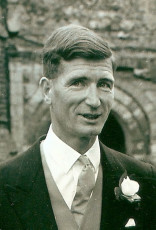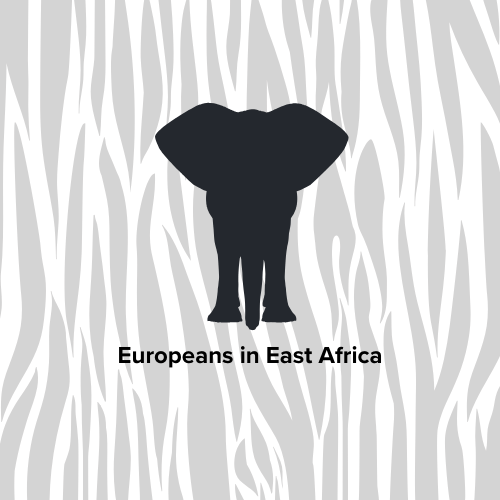View entry
Name: KITCHENER, Charles Eaton, Lord

Nee: son of Henry Franklin Chevallier Kitchener (1938 rank of Earl's yr. son); nephew of Kitchener of Khartoum
Birth Date: 11 Mar 1920 Dover
Death Date: 30 June 1982 Southampton
First Date: 1922
Last Date: 1961
Profession: Teacher at Duke of York School, Nairobi
Area: Maji Mazuri Estate Soy, Kitale; Lokitella Farm 1810
Married: In Canterbury 15 Aug 1959 Ursula Hope Luck b. 4 Oct 1923 Cranbrook, Surrey, d. 6 May 2007 Spalding, Lincs.
Children: Emma Joy (18 Feb 1963) (Fellowes)
Book Reference: Hut, Burke, Debrett
School: Winchester and Trinity College Cambridge, RCOS
General Information:
He bought an ancient Willys-Knight saloon which resembled a pantechnicon. This was generally used for transport of schoolboys, since in those days we did not possess a school bus. Unfortunately, ‘Christopher’ gave up the ghost after Peter Langon – one of the early problem boys of Kirk House – had poured six bottles of Coca-Cola into his petrol tank. When the school moved to its present site, Charles as a bachelor became the unlucky one who was always put into the worst quarters. He occupied at various times many nooks and crannies and actually for a short time, slept in what is now the vegetable store in Block IV kitchen. In those days this building was used for tuition and as the Assembly Hall. He was a most adaptable person and never complained.
Throughout this time he was Form II form master and was able to give sound and helpful guidance to the future sixth formers and the young entry from the Preparatory Schools. In History and English he was able to take them far beyond the narrow confines of the set syllabus and instil an early appreciation of Literature and Ancient Cultures. He was a French and German linguist and taught these subjects to many classes as well as Scripture.
From the early days he devoted his energies and spare time to the collection of funds to build a chapel at the school. The first big event for this cause was a Symphony concert held in the lovely ballroom at Government House. This started off the fund with £125. From then on, for the next few years, Charles’ persuasion and enthusiasm were responsible for the collection of many thousands of pounds. As a sincere and regular Churchman this became his chief mission and occupation in his spare time. He was untiring in his efforts to part large commercial firms, professional men and leading farmers from their profits.
In 1952 Charles moved out of Kirk House to give married quarters to Mr and Mrs Pearson. Older members of the house will remember his many kindnesses and unobtrusive assistance in house affairs. In January 1956 he took over Eliot House which was fighting to establish its claim to equality with other houses in work and games. For the next four years he led them to a pitch of great efficiency and a happy era in which day-boys could hold their own in school affairs to an extent unusual in boarding schools. It was significant that in 1960 the five Yorkists who entered Oxford and Cambridge Universities were all past members of his house.
In August 1959 Charles Kitchener was married to Miss Ursula Hope Luck in the Lady Chapel at Canterbury Cathedral. We all hoped we should have them amongst us for many years, since Ursula’s charm had won many friends on a previous visit. Alas her health began to suffer from the altitude and she had a run of bad luck which meant a return to England. Charles had to resign in March 1961 and now has a post in Stanbridge School, near Romsey Abbey, Hampshire. It is difficult in the space allowed to pay just tribute to one who gave twelve good years of unselfish service to the school. His memory will always remain high in the Yorkish affections and his contribution to the school’s early history is an example to others. But it is for his kindness that he will be chiefly remembered; whether to new boys, African servants, parents or visitors, his help and unfailing courtesy was unsparingly given. It was a person of extreme modesty who added such a colourful panel to the Yorkist tapestry. (Adapted from The Yorkist Magazine 1962)
